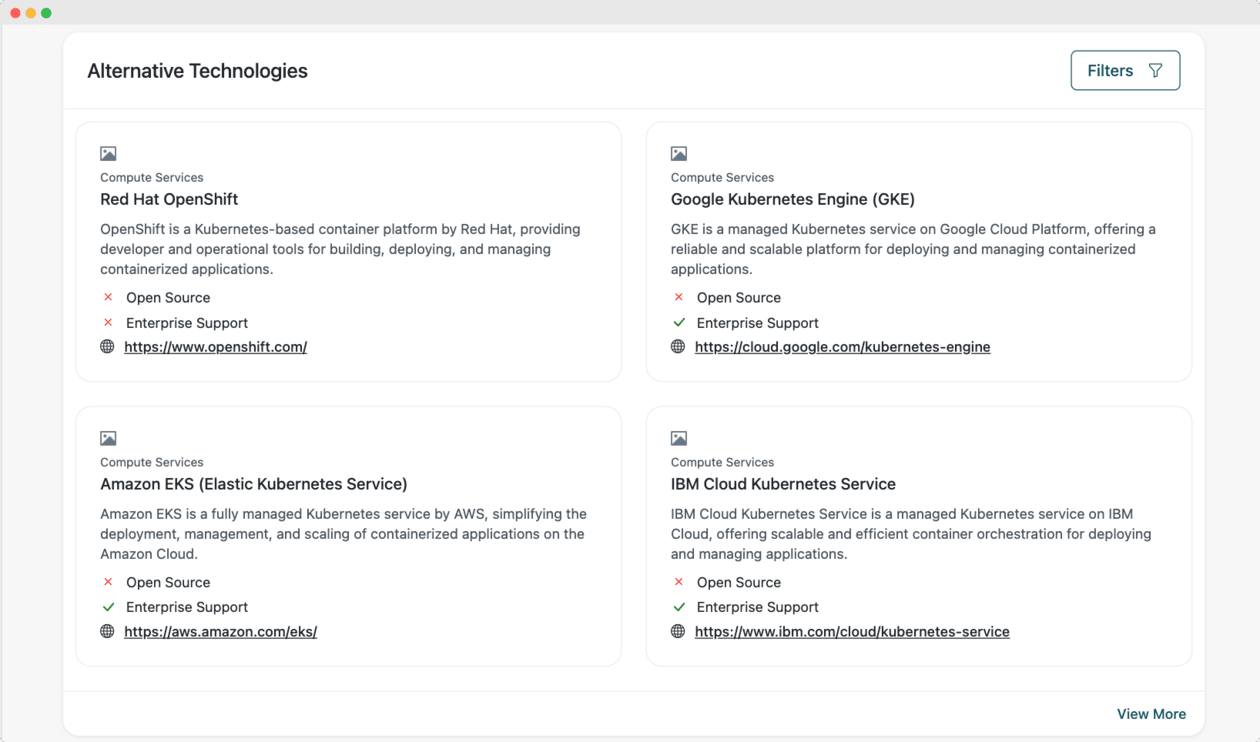
The EscapeCloud Platform is built around its powerful assessment engine, a tool that has been filed for patent with the U.S. Patent and Trademark Office and is currently in patent-pending status. Designed to streamline cloud exit assessments, this engine is particularly vital for organizations in the critical infrastructure sector, ensuring that they can transition out of cloud environments efficiently and securely. In this first installment of our Insights series, we explore the Resource Inventory stage—the foundational step in the cloud exit assessment process.
Understanding the Assessment Engine
At the core of the EscapeCloud Platform, the assessment engine drives the entire cloud exit process. Before initiating the Resource Inventory stage, the engine conducts a preliminary check of the provided credentials and permissions. This crucial step verifies that the credentials have the necessary access rights to perform the assessment without disruption. By confirming these permissions, the engine ensures it can execute its tasks effectively, laying the groundwork for a thorough and reliable assessment.
The Role of Resource Inventory in Cloud Exit
During this phase, the engine systematically identifies and catalogs all resources and services within the defined scope of the cloud environment. Depending on the cloud provider, this scope might be an AWS account or a Microsoft Azure resource group. The discovery process is comprehensive, ensuring that every relevant resource—whether compute instances, storage solutions, or network configurations—is accounted for and documented in an organized manner.
But what does this organized documentation entail? Essentially, it means structuring the discovered resources so they can be easily analyzed, managed, and referenced throughout the assessment process. This structured data is vital for subsequent stages like risk assessment and exit strategy development. Without a well-organized inventory, any cloud exit strategy would lack the necessary foundation, potentially leading to oversight and incomplete planning.
Why a Detailed Resource Inventory is Essential
A detailed inventory of cloud resources is crucial for several reasons. Firstly, it provides a clear and comprehensive view of all assets within the cloud environment. This visibility is critical for effective exit planning, as it ensures that every resource requiring migration, replication, or decommissioning is identified and accounted for.
Secondly, the inventory enables a more accurate and thorough risk assessment. Understanding the resources in use, their configurations, and their interdependencies allows the assessment engine to evaluate potential risks more effectively. For instance, it can identify which resources are critical and might present challenges during a transition, thereby informing a more robust exit strategy.
Furthermore, a well-maintained inventory allows organizations to monitor changes over time. Cloud environments are dynamic, with resources frequently being added, removed, or modified. By continuously updating the inventory, organizations can ensure that their exit strategy remains current and responsive to these changes, reducing the likelihood of surprises during the exit process.
Security and privacy are central to the Resource Inventory stage. The assessment engine operates with view-only access, meaning it only gathers metadata—information about the resources—without accessing or manipulating the actual stored data or credentials. This approach ensures that sensitive information remains secure, and the integrity of the data within the cloud environment is not compromised during the assessment.
For organizations handling sensitive data, this security-first approach is particularly reassuring. It ensures that their information is not exposed or at risk throughout the assessment process. The engine’s ability to perform effectively using only metadata highlights its sophisticated design, which balances thorough analysis with stringent security measures.
Conclusion
The Resource Inventory stage of the EscapeCloud Platform’s assessment engine is a critical element of any cloud exit strategy. By systematically identifying and organizing resources within the cloud environment, it sets the stage for accurate risk assessments and well-informed exit planning. This stage not only provides essential visibility into the cloud environment but also ensures that the assessment process is secure, leveraging only metadata and maintaining the privacy of sensitive data. As organizations increasingly focus on their cloud exit strategies, the importance of a robust and comprehensive Resource Inventory cannot be overstated.


